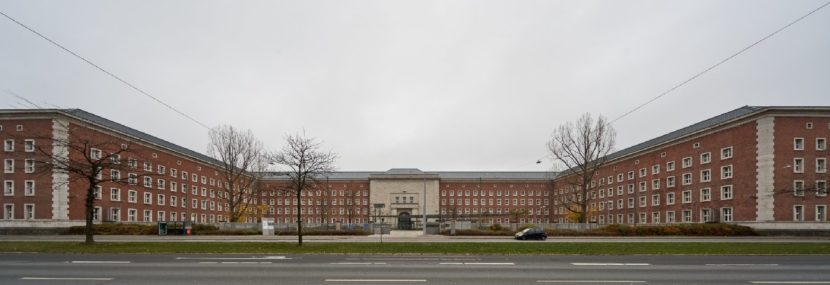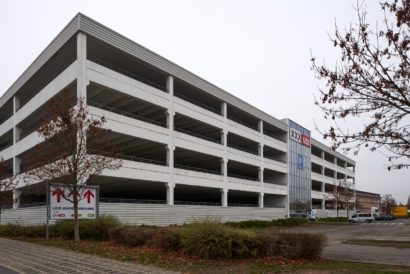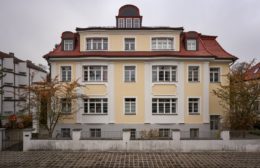Nuremberg (SS-Barracks) Subcamp
May 12, 1941 – April 1945
Starting June 15, 1943, under the authority of the Flossenbürg concentration camp
![]()
Former SS-Barracks in Nuremberg, 2018 (Flossenbürg Concentration Camp Memorial / Photo: Rainer Viertlböck)
![]()
At the location of the former prisoner's quarters is a parking garage, 2018 (Flossenbürg Concentration Camp Memorial / Photo: Rainer Viertlböck)
![]()
Former villa of the Nuremberg Gestapo Chief Benno Martin on the Virchowstraße, 2018 (Flossenbürg Concentration Camp Memorial / Photo: Rainer Viertlböck). The prisoners also had to remove debris from bombings here.
-
Prisoners
In 1941, 58 prisoners (German, Polish, Czech) arrived at the SS-Barracks from Dachau. Later, the number of inmates fluctuated between 41 and 175, according to estimates by the prisoners between 100 and 300.
-
Forced labor and quarters
Most of the prisoners worked in the SS barracks compound for the Building Department of the Nuremberg Waffen SS and Police, while some were detailed to the SS Intelligence Reserve Department. The tradesmen laid mains, built garages, and did roof work in the barracks area. They were quartered in the basement of an annex building.
-
After the air raids on Nuremberg, the prisoners were forced to do dangerous debris clearance work. This included rebuilding destroyed armaments production, for example at the automotive manufacturers Faun. The small subcamp at Eichstätt was constructed by prisoners from Nuremberg. The conditions in the Nuremberg subcamp were better than in the Flossenbürg main camp.
-
Guards
Of the ten detail leaders, Kurt Schreiber was described as having been particularly brutal.
-
Death toll
No verified deaths
-
Disbanding of the camp / end of the war
The subcamp was evacuated in April 1945. The majority of the prisoners reached the Dachau concentration camp on April 26, 1945.
-
Commemoration
Since 2007, two information panels are mounted at the gateway to the former barracks.


